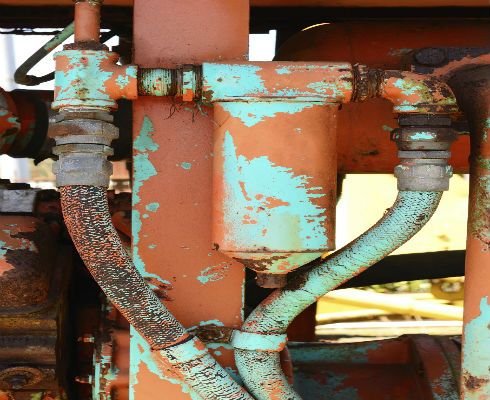Your hydraulic system is an expensive piece of machinery and your business probably relies heavily on it, so you want to keep it working as smoothly as possible. Regular maintenance of your system is essential if you want to keep everything in good working order and reduce the risk of costly hydraulic repairs.
70 % of ALL hydraulic system failures are due to contamination. Regular filter changes are an essential part of the ongoing maintenance of your system to prevent contamination. Contaminants in hydraulic fluid can cause a number of different issues, including reduced lifespan of parts and blockages and clogging.
How often should I change my filter element?
It’s important that you know when your filter needs to be changed. Many people make the mistake of changing their hydraulic filter after a set number of hours, but this is often an unreliable way of telling when a filter needs to be changed.
If you use a time-based method of determining when to change your filters, you could risk changing them too frequently and spending more than you need to on filters. Though this may keep the system clean, it is not a cost-effective or accurate means of maintaining optimal filtration.
On the other hand, operating with contaminated oil can compromise other parts of your hydraulic system and lead to expensive repairs and replacement, as well as downtime, so it’s important to get the timing right.
The importance of getting the timing right
The best time to change your filter element is just before it reaches its maximum dirt holding capacity (DHC) – that is the maximum amount of contaminant that the filter media can safely contain.
As most of the particles that hydraulic filters are intended to catch are too small to be seen by the naked eye, you need to find a way of monitoring how many particles are in your filter. This may require installing a mechanism in your hydraulic system that monitors the pressure of the hydraulic fluid flowing through the filter, and alert you when there is a drop in flow, which may indicate that the filter is full, and needs changing.
A filter in one application may need to be changed less often than the same filter in a different application. The amount of contaminant in the system, system flow rate, type of filter media, element micron rating are just a few variables that will affect the rate at which an element will hold contaminant.
Filter monitoring system options
There are a number of systems available which you can use to accurately monitor the flow of oil through your filters.
1. One method is to use a filter clogging indicator, a cost effective means of getting the best performance from your filter. Filter indicators can be installed into the filter and will accurately alert the user when change out is required.
Filter indicators are available in a number of different types and ratings to suit almost every filter application, ranging from simple visual indicators to more elaborate electric switching pressure differential type indicators.
Visual indicators are available in many forms and can be a pop up type, colour changing (green to red) or even a simple gauge type. Electric indicators indicate via an electronic signal when element change out is required, and thus can be utilised on systems that may be in-accessible or in a remote locations. Electric indicators can be wired so that the system shuts down to avoid any serious damage in the event of the filter being clogged.
2. A combination of visual and electric indicators is also available, having the advantage of both visual and electronic indications the element requires changing.
Another method is to use a particle counter which measure both the size and quantity of particulate in the system. Particle counters are becoming more prevalent in the industry as businesses are seeing the advantages of monitoring the cleanliness of the oil on an on-going basis.
As oil prices soar, it is increasingly important to get the maximum life out oil reserves. While filter indicators allow for optimal filter performance, a particle counter gives an indication of the cleanliness of the system as a whole. In any system, information is key and knowing the cleanliness of your system arms the user with the best information needed to maintain the system performance.
Filters and particle counters when used together as part of a cleanliness program will help keep your hydraulic system running at peak performance.
To ensure your system is fully protected, it’s advisable to use a high quality filter, which is designed to be used with your specific system. There are a number of different types of hydraulic filter available to suit different systems and types of fluid.
At Berendsen, we are a one-stop provider for all your hydraulic solutions, and we distribute MP Filtri filters and filtration systems.
If you are having difficulties with your hydraulic system, we have a number of different industrial hydraulic services centres around Australia. You can contact us at the relevant locations:

